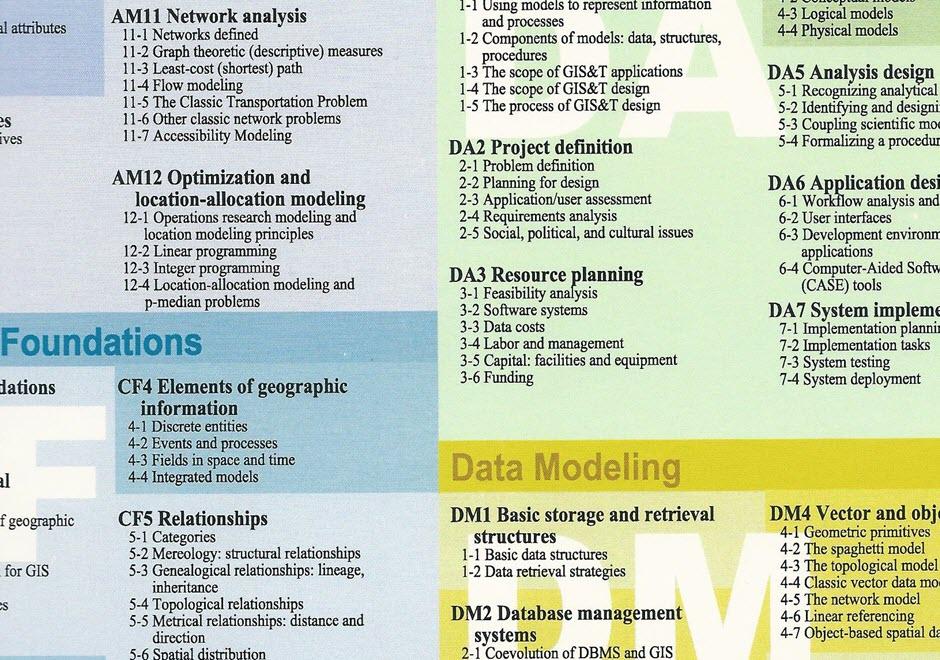DM-61 - Ongoing GIS revision

- Describe a method that allows users within an organization to access data, including methods of data sharing, version control, and maintenance
- Describe how spatial data and GIS&T can be integrated into a work flow process
- Develop a plan for user feedback and self-evaluation procedures
- Evaluate how external spatial data sources can be incorporated into the business process
- Evaluate internal spatial databases for continuing adequacy
- Evaluate the efficiency and effectiveness of an existing enterprise GIS
- Evaluate the needs for spatial data sources including currency, accuracy and access, specifically addressing issues related to financial costs, sharing arrangements, online/realtime, and transactional processes across an organization
- Illustrate how a business process analysis can be used to periodically review system requirements
- List improvements that may be made to the design of an existing GIS
- Describe how internal spatial data sources can be handled during an implementation process






KE-19 - Managing GIS operations and infrastructure